The HSCC Super Prix is one of the most eagerly anticipated events on the UK historic racing calendar………….Simon Hildrew popped down to his local track with cameras at the ready…………
John Brooks, July 2015

Our Special Correspondent trekked up to Northampton a while back for the Britcar 24…………….he shares some thoughts and a short history lesson………….
Revival of Silverstone 24
Although 24 hour races have been run since 1905, most of the established examples date from the 1920’s: the Bol d’Or in and around Paris was first run in 1922, Le Mans arrived on the calendar a year later, Spa copied this in 1924 and even Monza tried a race that year as well. Britain wanted to join in also but the only possible location at that time was Brooklands. Unfortunately, noise restrictions imposed by the neighbours’ complaints meant no night racing was allowed at the Surrey track; they resorted to splitting their race, the Double Twelve, into two parts run on consecutive days.
It is not generally realised that the first 24 hour race to be run in the UK was as recent as 1980 when the Willhire event took place at Snetterton. This was a race for production cars and fifteen such events were held at the Norfolk circuit including a 25 hour race in 1989 to celebrate the 25th anniversary of the sponsor, the Willhire Vehicles Rental Company, a local car rental firm. The race’s demise was accelerated by the low level of attraction on the Group N saloons and 1994 witnessed the last of these once popular events. In 2003 a 2CV 24 Hour race was the last long–distance at Snetterton to date but the challenge of staging a full 24 hour race in Britain was taken up James Tucker’s Britcar series at Silverstone in 2005. Since then there have been seven further 24 hour races at the Northampton venue including the 2015 event. This latter was officially titled the Dunlop 24 in deference to its generous sponsor.
Here are some of the more interesting cars to tackle the round-the-clock event:
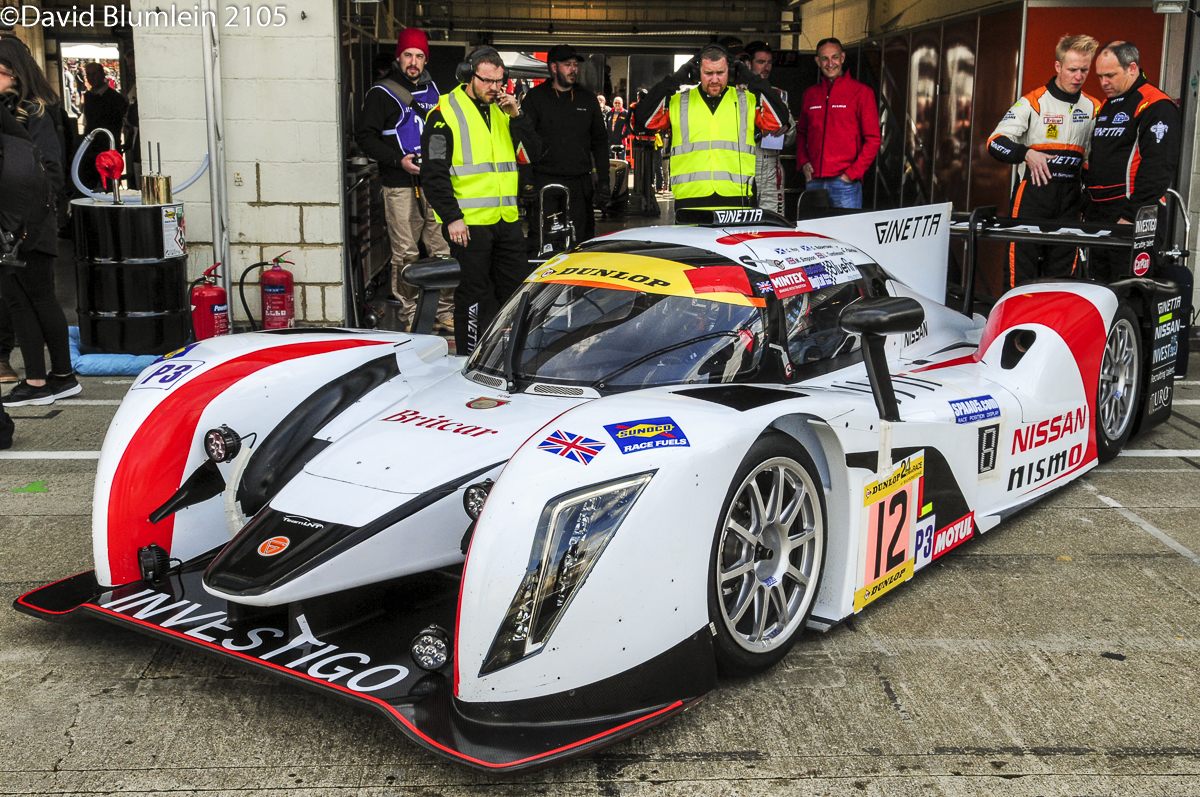
Ginetta chose to gain more experience with their new LMP3 car which had made its début at Silverstone at the recent ELMS round. It streaked away in the early laps but later suffered various problems which dropped it right down the leader board.
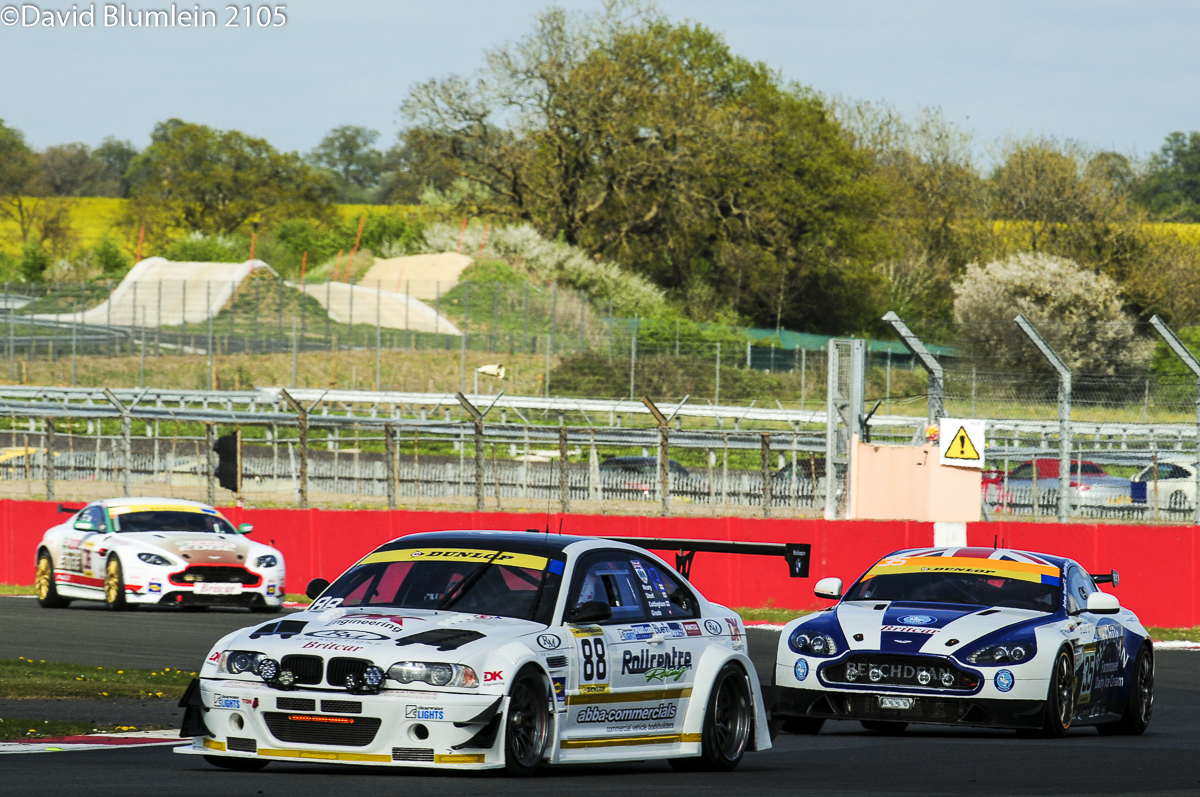
Martin Short’s RollCentre Team entered a potent BMW saloon with a 4-litre V8 engine but the car did not last long, alas!
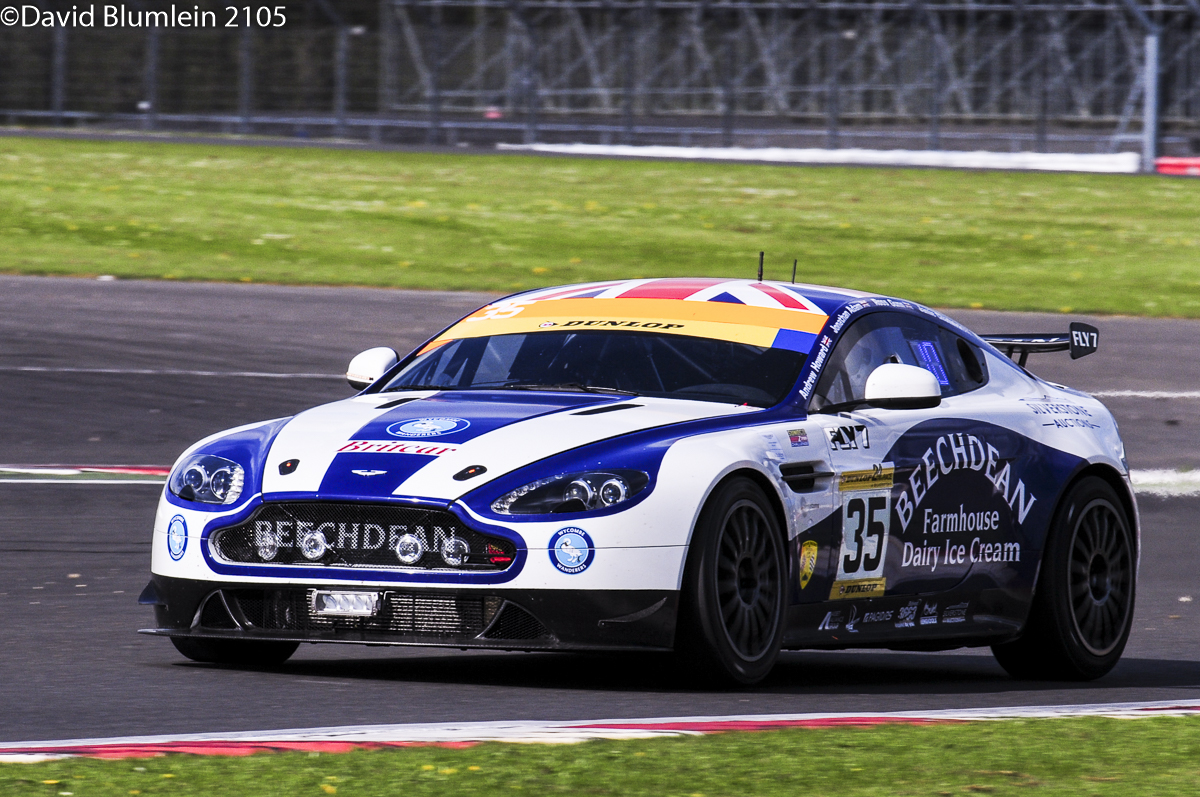
The winning BEECHDEAN GT4 Aston Martin Vantage; 16 year-old Jamie Chadwick was among the successful drivers.
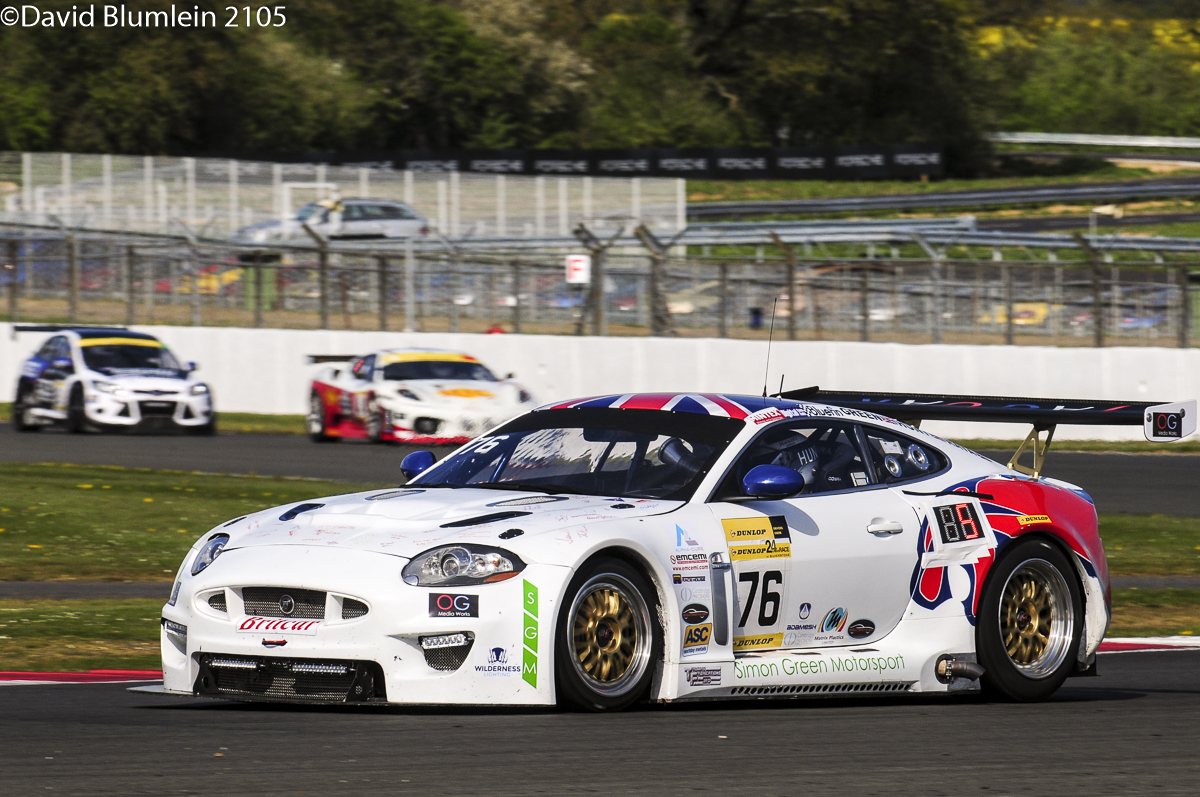
Good to see any Jaguar involved – this XKR Coupé failed to finish.
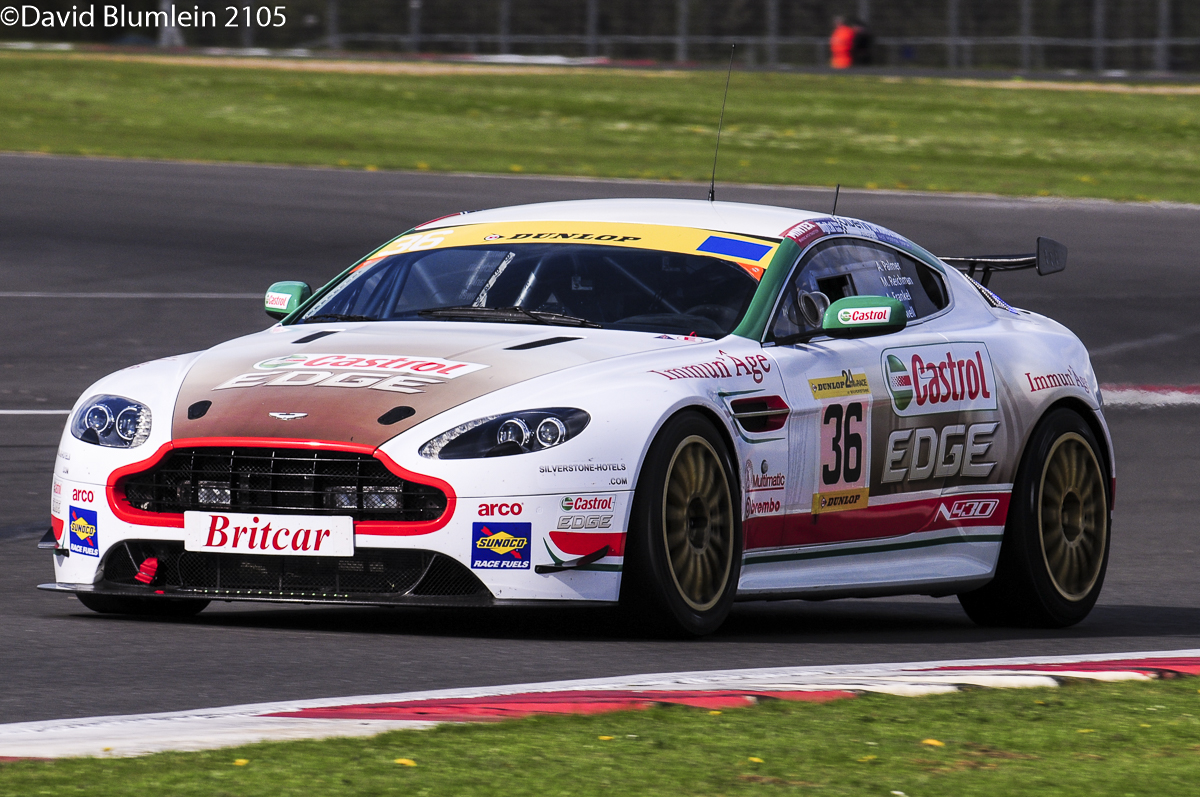
This works-entered Aston Martin Vantage finished 5th, driven by CEO Andy Palmer, Design Director Marek Reichmann, journalist Andrew Frankel and GP3 driver Alice Powell.
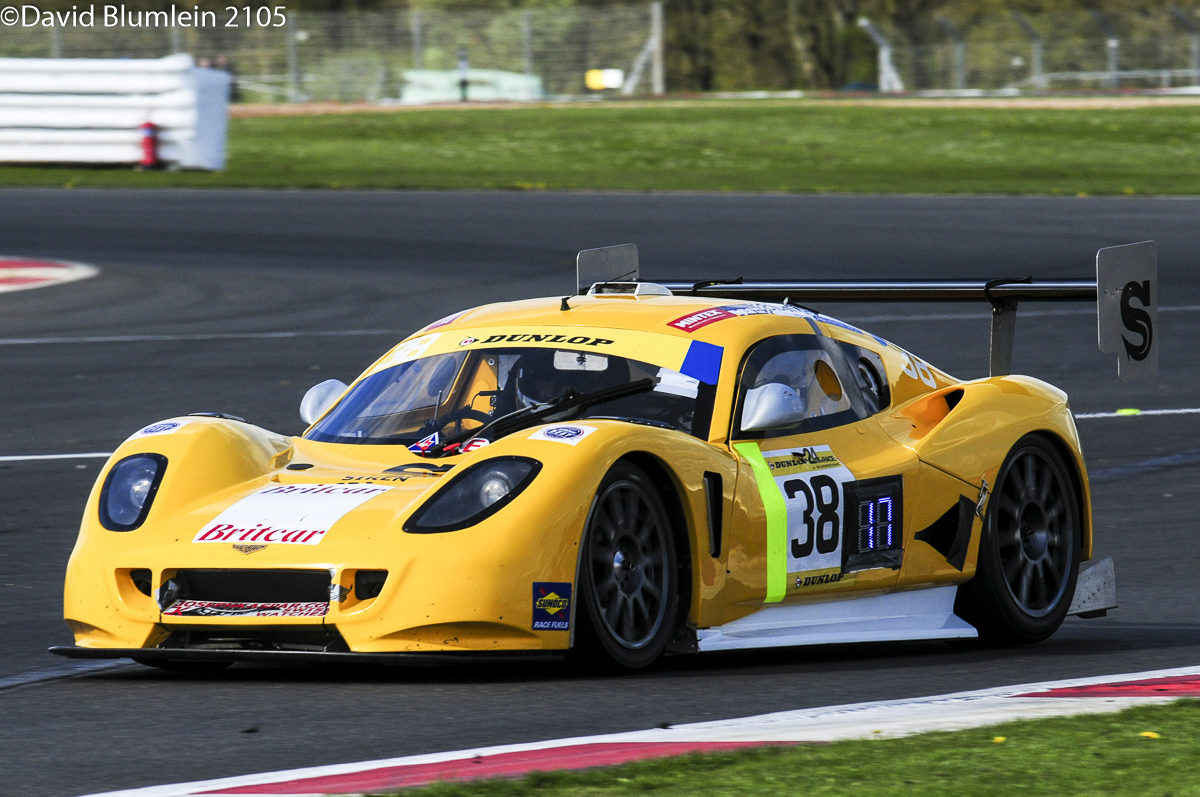
The Chevron GR8 made a welcome appearance in the race.
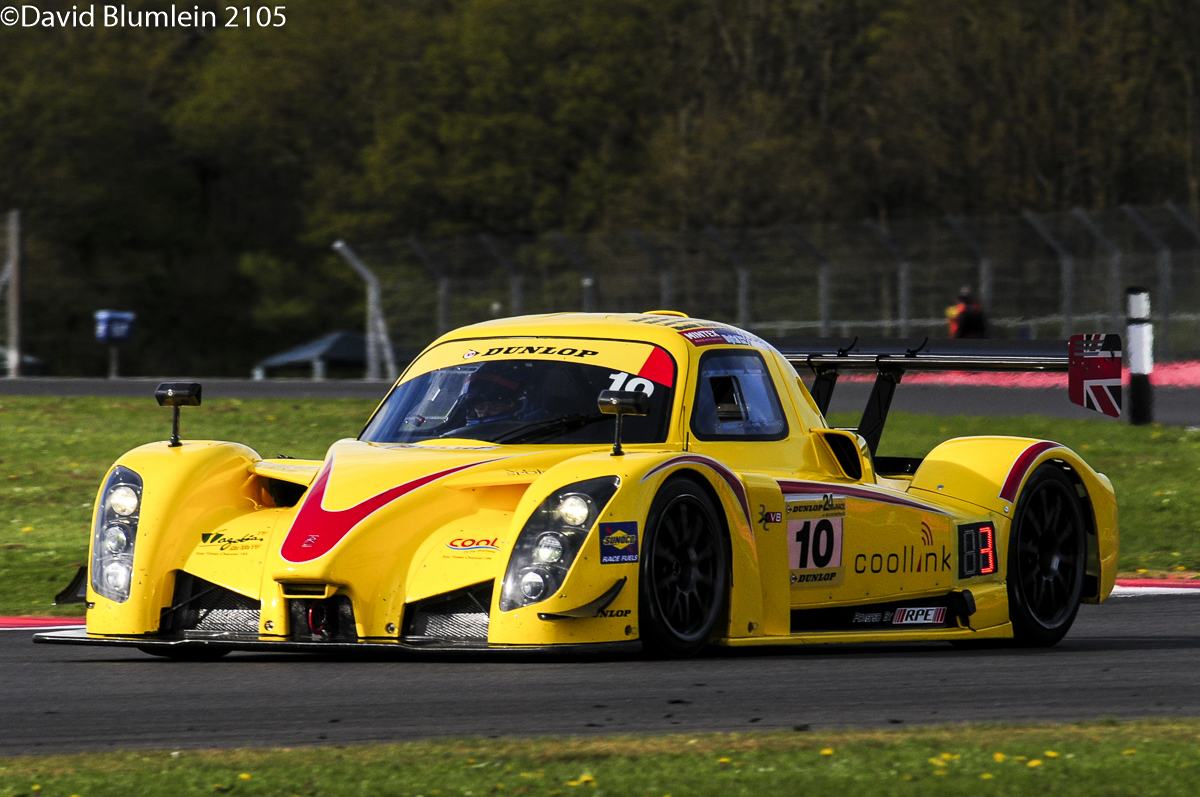
This Radical RXC is the original chassis. It has an RPE 3-litre V8 and uses a bespoke Quaife 7-speed gearbox. Despite some problems the car won its class.
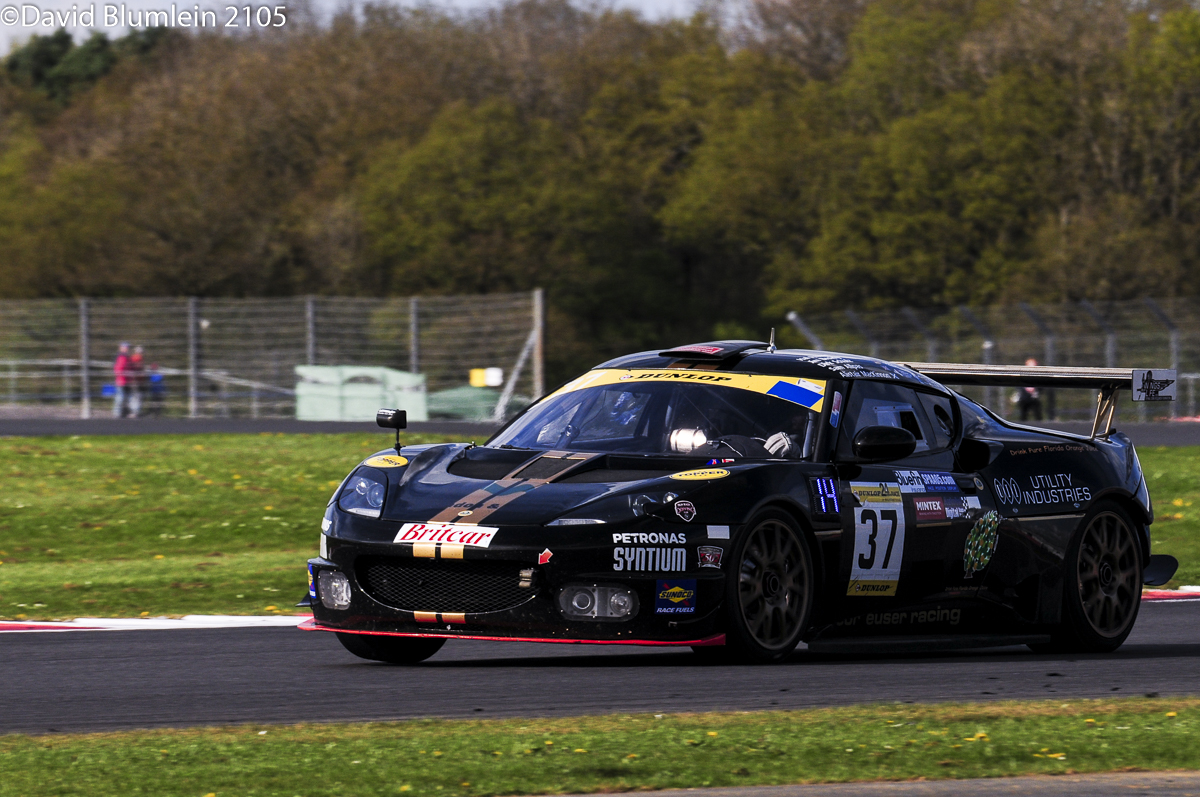
Cor Euser’s team has achieved many successes with his Lotus Evora and this time it reached the podium for its third place.
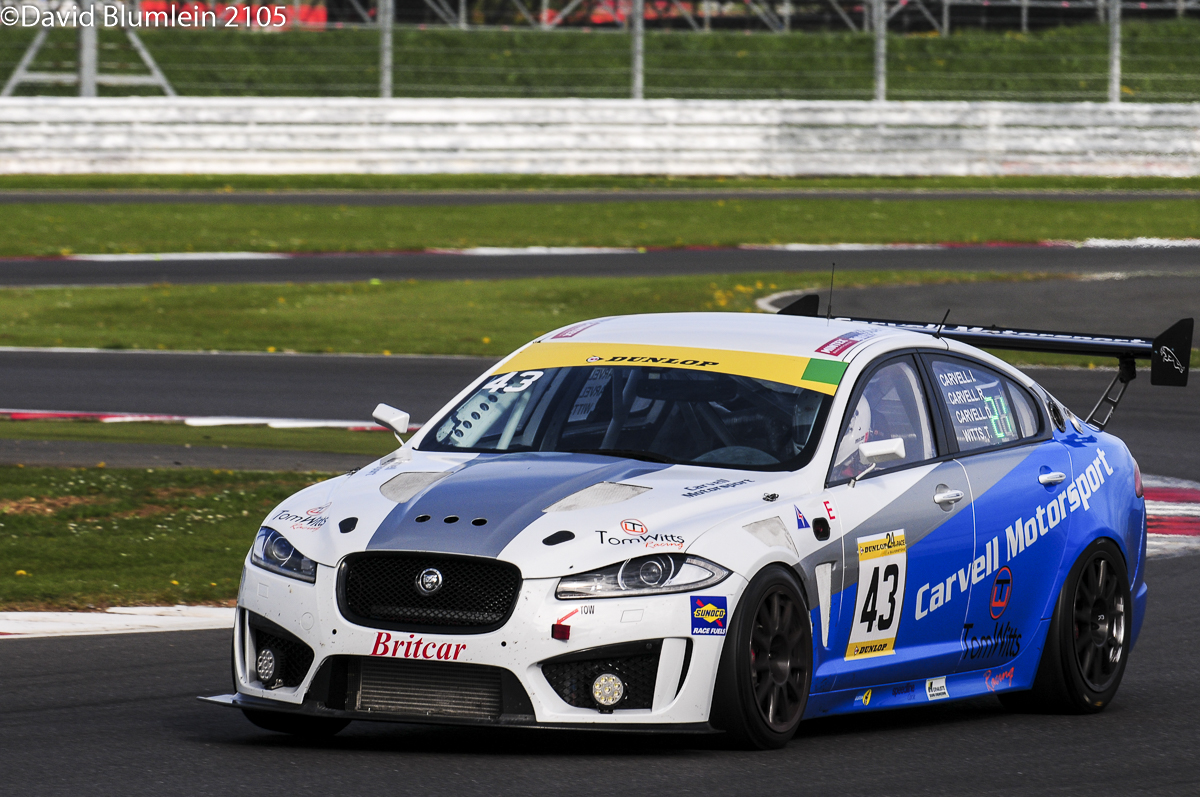
This Diesel Jaguar once won its class in the Nϋrburgring but lacked success in this race.
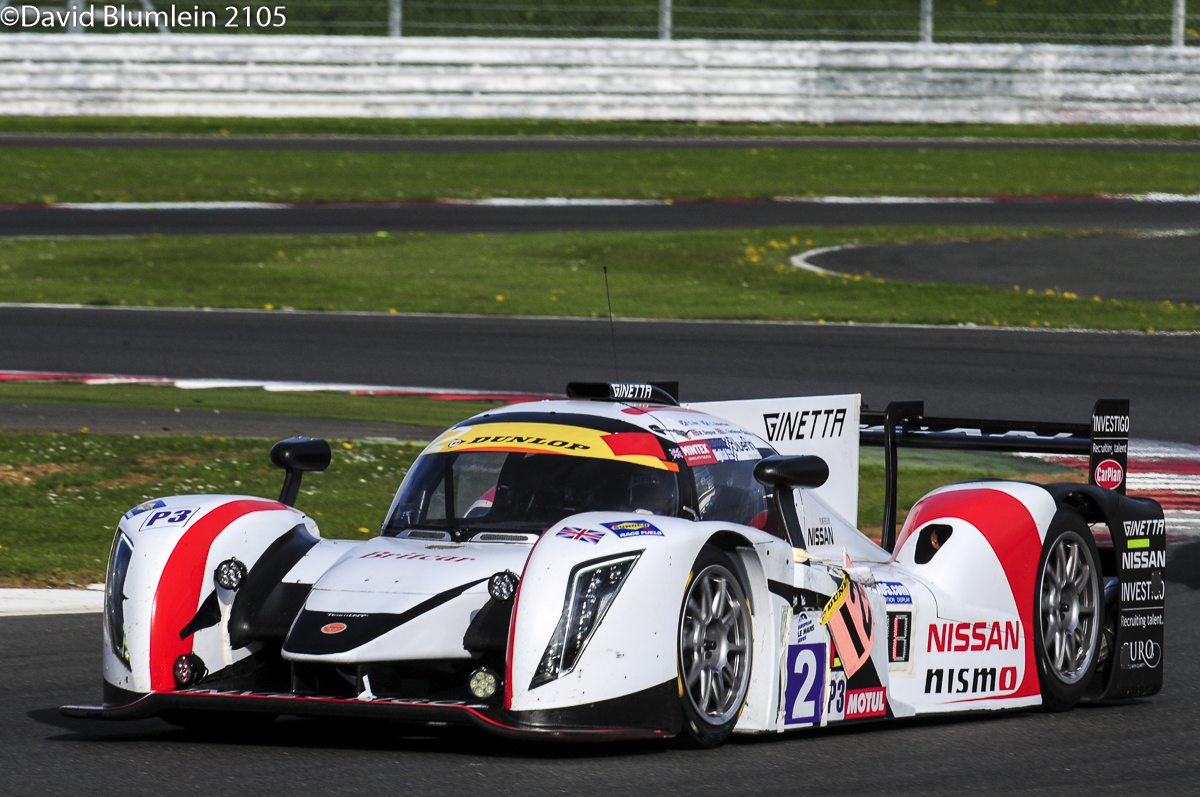
Notice the Ginetta’s number 12 coming off to reveal its ELMS number.
It becomes number 2!
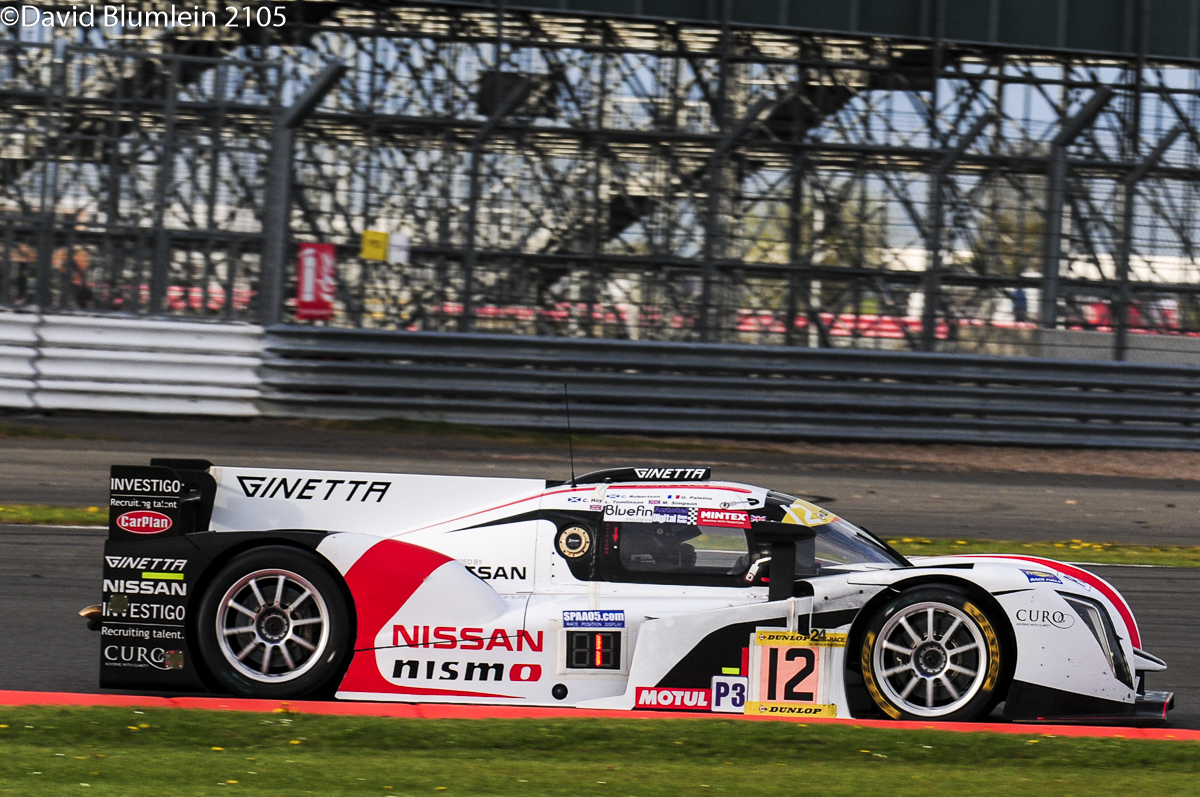
The car at Village Corner proving it is really number 12!
TAILPIECE
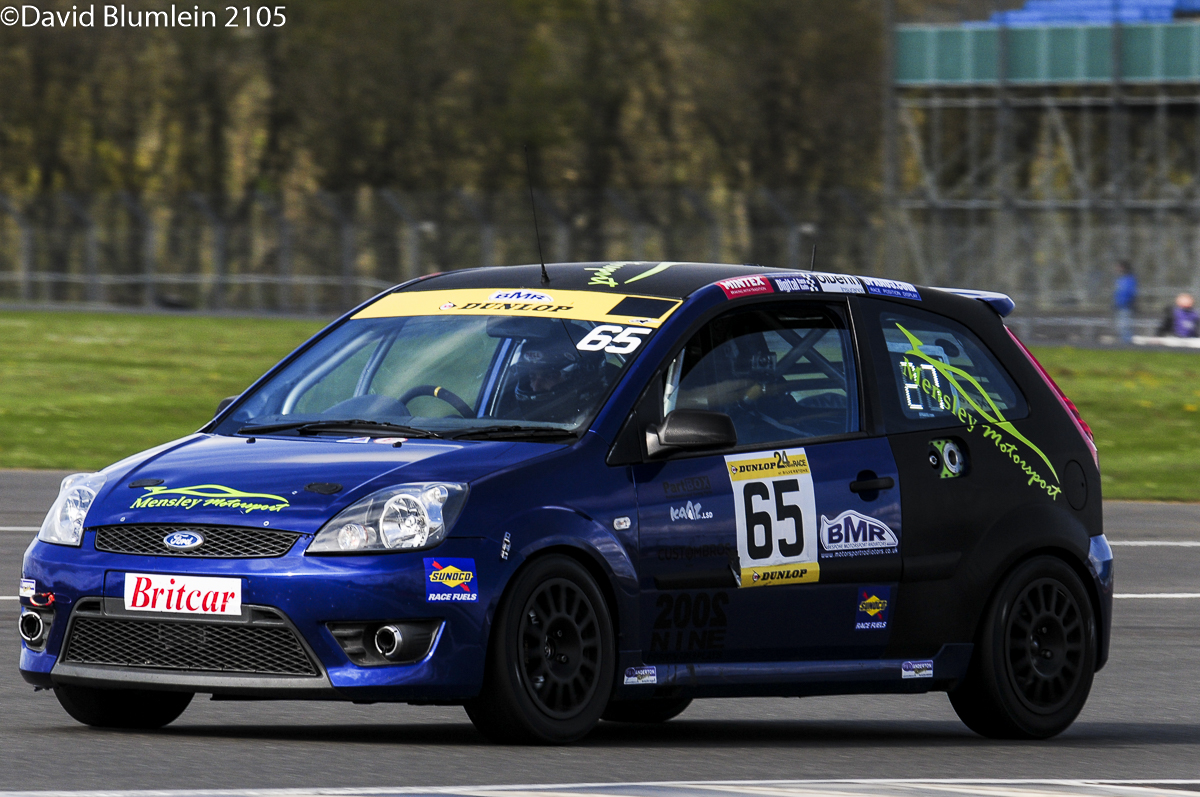
This little Ford Fiesta was the smallest car in the 24 hour field.
Words & images © 2015 David Blumlein
Since it was rescued from oblivion at the hands of wannabe F1 promoters Donington Park has been restored to its former glory. It is the venue for some the finest historic racing meetings in the UK. DDC’s man with a lens or two, Simon Hildrew, was in attendance at the recent Historic Festival…………we are fortunate to share his work from that weekend.
John Brooks July 2015
In the second part of his survey of the endurance motorsport scene, János Wimpffen considers the leading organisations in European GT racing, SRO, Creventic and VLN.
The Stéphane Ratel Organisation is now the granddaddy of European GT racing. Its antecedents go back to the BPR (Barth-Peter-Ratel) Global GT Series which began in 1994 and most famously provided the framework for the long-lived FIA GT Championship. After having lost its World Championship status SRO became semi-independent from the FIA which has turned out to be a blessing in disguise.
SRO, through its former European GT3 Championship, was responsible for carving out a niche for the GT3 class and it has become the sole category for what has bifurcated into two quite different series. The present form of the Sprint Series began in 2010 and consists of two races during the weekend. The main function of the Qualifying Race, typically held on Saturday, is to set the grid for the Main Race. Both are one hour in length with pit stops and driver changes taking place during a mandated ten-minute mid-race window.
The SRO Sprint series is the most creative of all sports car series in testing the waters at some rather unique venues, including street courses in Baku and Moscow.
The SRO Endurance Series primarily consists of three hour races with the Spa-Francorchamps 24 Hours as the season’s centerpiece. In many ways the Endurance championship is the spiritual successor to BPR as it caters largely to “gentleman” drivers. While the technical formula for both series is based on GT3, there are subsidiary classes reserved for non-pro rosters called Pro-Am and Am (Silver Cup in the Sprint Series).
The Blancpain sponsored Endurance Series has grown into a very rich forum displaying all of the current GT3 machinery. New models for 2015 include the Lamborghini Hurracan and the McLaren 650S. Many other marques are currently circulating such as Audi, Aston Martin, Bentley, BMW Mercedes-Benz, Ferrari, Nissan, Porsche, and Jaguar—the last being represented only by a troubled, privately built car.
Entries for the Endurance Series have frequently exceeded 60 cars but the Sprint Series rarely has made it to two dozen. The short races do offer no holds barred cut-and-thrust battles. It is rare for the entire field to make it through the opening lap unscathed. That expectancy of carnage is one reason why some teams have balked and run primarily in the endurance rounds. Orthodox sports car fans may balk at one-hour races being considered a major event but the made-for-TV / video game format has a special type of appeal. Both of the SRO series have exclusive agreements with Pirelli.
The Dutch based Creventic Organisation has emerged as another major player on the European scene. They have been managing the Dubai 24 Hours since 2006 and this race has steadily risen in prominence, becoming a wintertime jaunt for European runners. Creventic expanded the concept a bit with a loose series begun in 2008 and this year the all-Hankook shod 24 Hour Series has become a full-fledged FIA championship. Despite the title, many of the rounds are actually 12 hour races. The fields for Creventic races are an eclectic mix of GT, Touring and silhouette specials. Overall winners at Creventic races invariably are built GT3 specs. Called A6, they are slightly altered and frequently must run above a reference lap time—a variation on the BOP theme.
There are important endurance races which are independent of any series. The chief European example would be the Nürburgring 24 Hours. For most of this race’s 30 plus year existence it was primarily a gigantic German club race.
Many of teams in its almost preposterous starting fields of nearly 200 cars still fit the mold of club racers and come from the ranks of slower GT and Touring categories. However, the sharp end of GT3 (called SP9-GT3) has inexorably become the domain of the major factory teams and has been fiercely contested of late by BMW, Audi, and Mercedes. Further afield in Australia, the Bathurst 12 Hours has taken on a similar role as the antipode’s most significant independent GT endurance race.
Our old friend János Wimpffen has agreed to share his wisdom with us here on DDC………this is the first of (hopefully) many despatches from the front.
This is the first of series of reports which in cyber-terminology may be labeled as a “blog”. Much like others blogs it will be cumulative effort, building up from the start. It will have the elements of a travelogue, with commentary on local customs as well as more traditional race reportage—albeit in a more summary form. The objective is not to provide a lap-by-lap or hour-by-hour accounting of an event. Other sites do that, ranging from merely adequate to exemplary. Rather, a key point is to convey the atmosphere of a race meeting, offering some grander perspective on proceedings. But such embellishment is not being submitted merely for dispassionate pleasure but rather to position each race within the rather broad tent that defines contemporary sports car racing.
To this end, we begin with what might be termed as a primer on the state of this branch of the motor racing discipline, circa 2015. The tone is to aim for a comfortable middle ground. Often, race reportage presumes that one is already familiar with the cadence of each series, conversant with the names of the teams and drivers, and aware of all the subtleties of rules and technical changes. We will not presume that, nor will we presume that the reader will necessarily be riding on every last nuance of detail. Instead, what we do postulate that since you, Dear Reader, are here—you are already a great fan of sports car racing, only that you are content to be familiar with the general trends. In such manner, there should be nuggets of enjoyment here, regardless of your ongoing level of interest and monitoring of each race and series.
Sports car racing, for many of its decades of history, has been subject to that old admonishment, “may you live in interesting times.” It is arguable as where exactly the 2015 season sits along the spectrum of interesting to dull, but clearly the tendency is towards the fascinating end.
The WEC has truly become global in scope and following, meeting or exceeding most expectations. The other series had at various times made forays into having a broader geographical reach but with the advent of the WEC they are all comfortably ensconced within a continental or regional framework.
The most senior of these series and the most stable is the European Le Mans Series. Its origins were in the early noughties and ELMS has LM P2 as its headline class. The LM P2 category has come a long way over the course of a decade. It began purely as support to LM P1 and was always intended for privateer entrants. It still has that approach but LM P2 has matriculated from a “last man (barely) standing” into a consistent pattern of close, reliable racing at a very high level of professionalism. LM P2 shares a trait that many such classes have exhibited in the past. There was a time when the category was populated by a very colorful array of chassis and engine combinations. Over time a few key constructors have risen to the fore, in particularly Oreca, which dominates numerically as does the Nissan engine. Ligier and the Onroak-built Morgan, along with the BMW derived Judd motors have added variety and genuine heft to the class. They have been joined this year by the Gibson marque, which is actually the reincarnation of Zytek, the car itself a descendant of Reynard, by YGK and DBA (not at all confusing).
Three GT classes can be seen in the ELMS and as with all other series; Grand Touring is in rude health. For past decade or so there have been three developments that have cemented GT’s popularity and close racing. First and perhaps foremost has been the emergence of GT3. These cars follow fairly tight homologation standards, are designed to be user friendly—read, good for novice and gentleman drivers, and are subject to the often controversial Balance of Performance standards. BOP’s aim is to regulate that no model exerts undue advantage for too long. Purists may bemoan that BOP goes against the grain of motor sport as being a contest for improved technology, but few can argue with results showing some thrilling contests. Of course, those at the short end of a BOP adjustment will complain—but such wailing has been with us since well before board tracks. BOP is practiced across a variety of classes and series and is the second pillar of GT’s ascendancy. It is manifested on cars largely through playing with aerodynamic features, widening and narrowing inlet air restrictors, fuel capacity, and occasionally through using ballast weights.
The third major development over the past decade has been the introduction of driver classification systems. Depending upon experience, age, and history of success, drivers are rated as Platinum, Gold, Silver, or Bronze. Each series and each class then employs rules as to the mix required on the roster and for minimum/maximum times behind the wheel. Perhaps paradoxically after having noted the importance of GT3, it plays no role in the FIA WEC and is only one of the two GT classes in ELMS.
There is an altogether new “budget” class in the ELMS for 2015, LMP3. Chassis specifications are quite restricted with Ginetta being the first to build to the regulations. All cars use identical 5.0-liter Nissan engines. ELMS race are uniformly four hours in duration.
Most importantly, after 20 years in the wilderness, endurance racing has a World Championship, a platform for manufacturers to applying their technology and marketing. Now in its fourth season, the FIA World Endurance Championship is thriving. It has become the nexus of the most technologically advanced racing vehicles found anywhere. With three manufacturers (and a fourth if Nissan doesn’t fall flat) there is competition at the highest level in the hybrid based LM P1 class. The undercard of the LM P2 and GTE classes is as good as ever. Once again the Le Mans 24 Hours is part of the Championship—although the French classic has always more than adequately held up most of the sports car racing sky even when running to an independent formula. The FIA WEC hews to a very consistent schedule of locations and race lengths, with six hours being the norm apart from Le Mans. Classic European venues are matched further abroad by important new locales like the Circuit of the Americas in Texas, Shanghai, and Bahrain as well as the return of the venerable Fuji.
While it is vital to introduce and position the FIA WEC at the pinnacle of sports car racing there were no races attended during these particular outings. One of the attributes that sets the current era apart from the last time that there was a bona fide world championship (1992 and before) was that back then it was pretty much the only game in town. Yes, IMSA GTP was quite significant during the 1980s, albeit only in North America, but there wasn’t the plethora of other major events as there is now. This is partly the legacy of the lack of a world series during the intervening period. It allowed such players as IMSA, Grand-Am, SRO, ELMS, and (on a more fractured basis) some Asian series to cycle through, have their own apogees and perigees, and leave a lasting influence on sports car racing in general.
János Wimpffen, July 2015
The Tourist Trophy is the oldest motor race still being contested, having first been run in 1905 on the Isle of Man. In recent years the Trophy has been awarded to the winners of the Silverstone 6 Hours race, a round of the World Endurance Championship of which this race was the first for 2015. There are four classes, LM P1, LM P2, GTE Pro and GTE Am and the teams look upon the Silverstone 6 Hours and the forthcoming Spa 6 Hours in Belgium as workouts for the all-important Le Mans 24 Hour race in June, just as in bygone years the Six Hour and Double Twelve races at Brooklands were viewed in the same way.
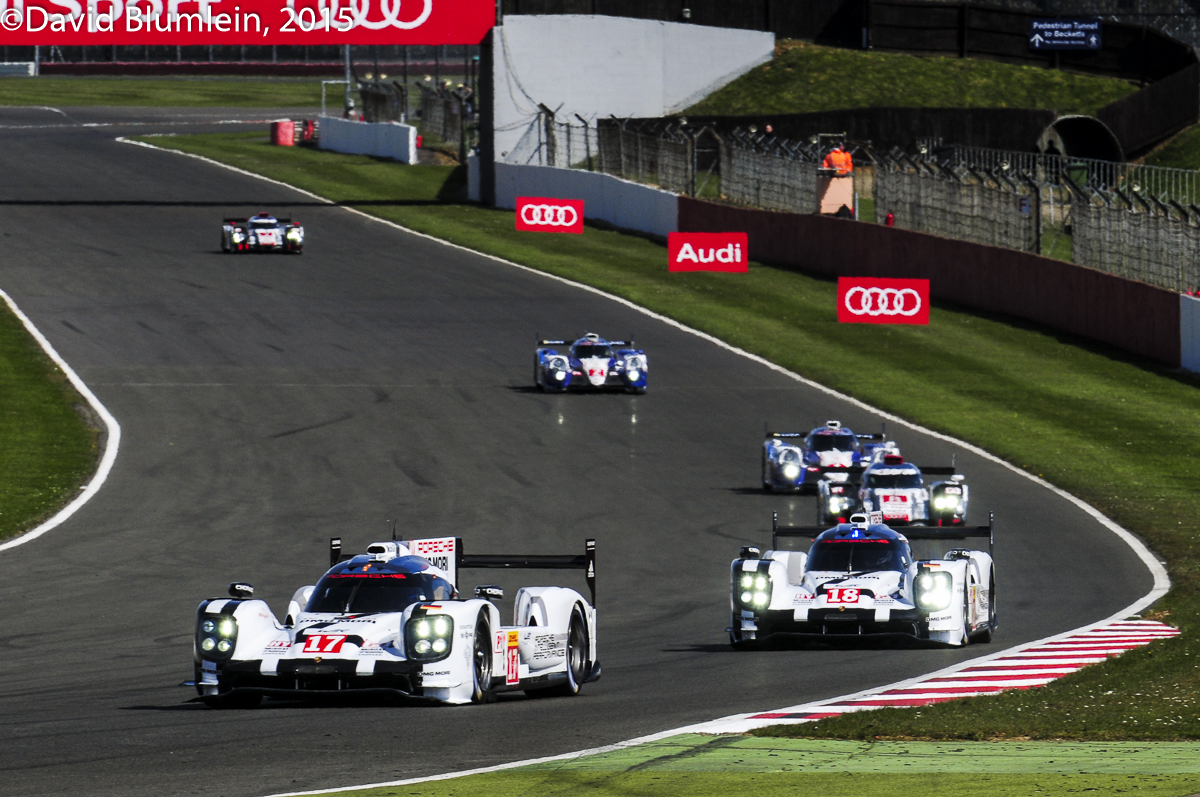
The Porsche 919 Hybrids took command from the start. Here Mark Webber sets the pace down the Hangar Straight into the fast Stowe Corner – it was not to last!
The GTE Am-winning Aston Martin Vantage V8 leads its team-mate and the LM P2 Alpine through Stowe.
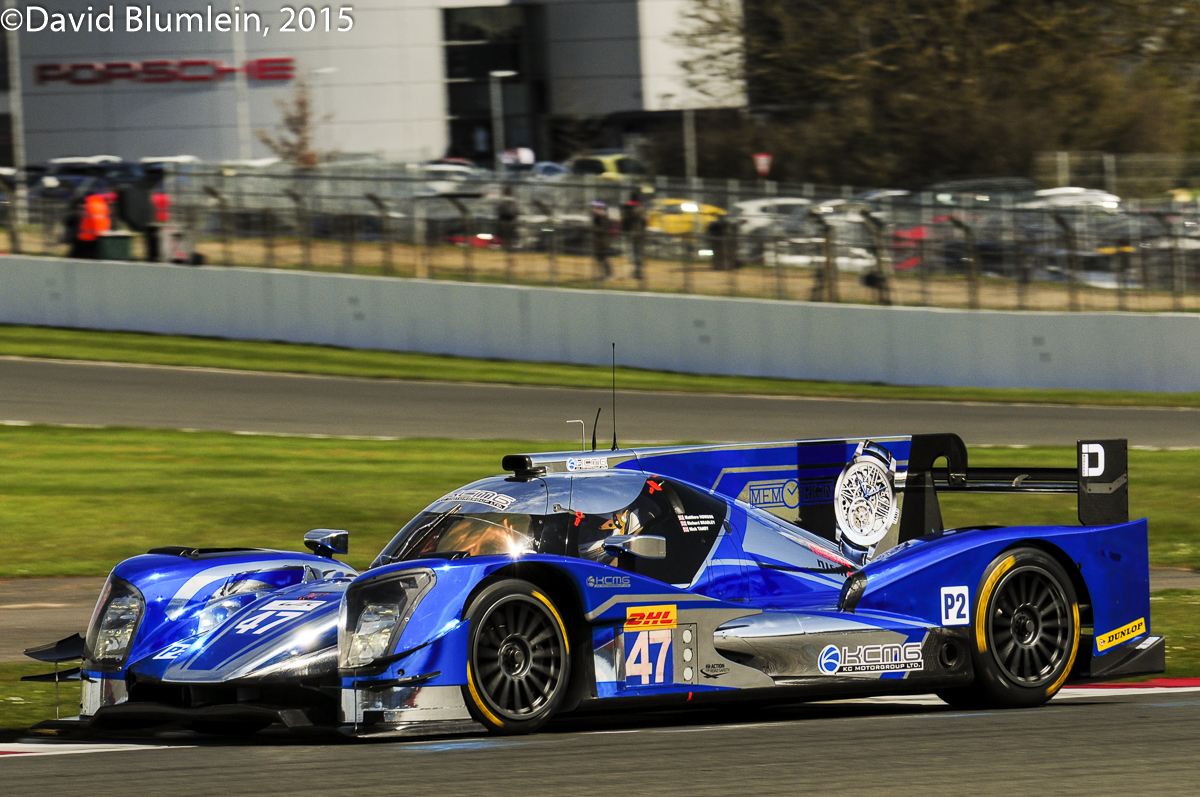
The LM P2 Oreca 05 Coupé was new and offered strong competition in this class in the early stages.
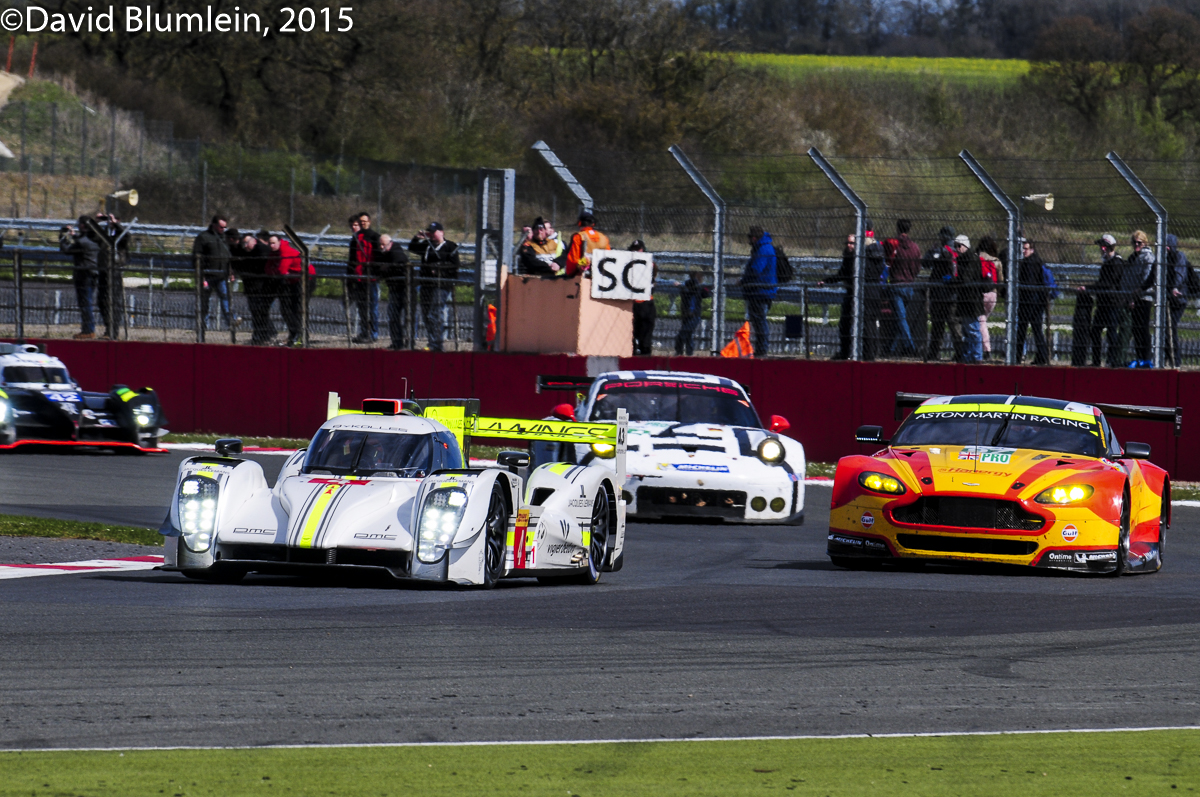
The CLM P1 was an old friend in new clothing but with an AER motor.
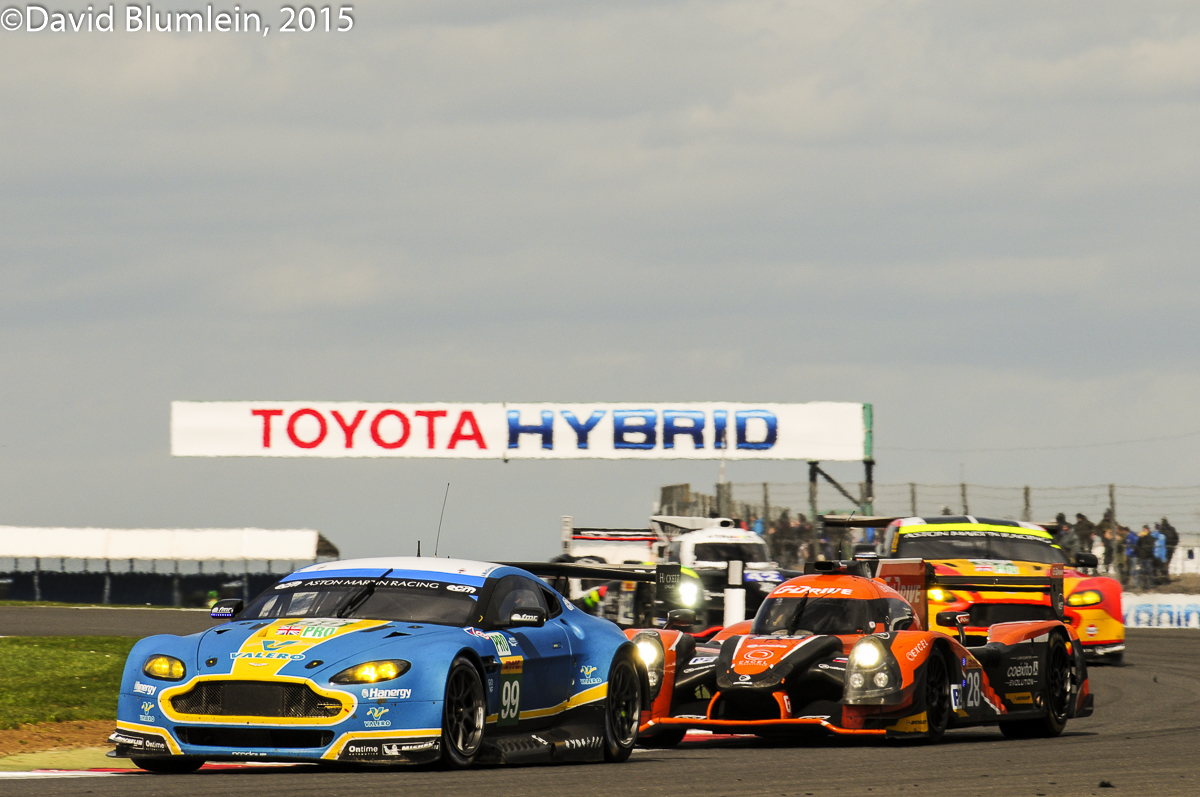
One of the joys of long –distance sports car racing is the “mixture” that often occurs in the corners, compelling the drivers of the faster cars to negotiate the “traffic” carefully – all part of the job of winning a race. Here is a tight group of GTs and prototypes at Becketts.
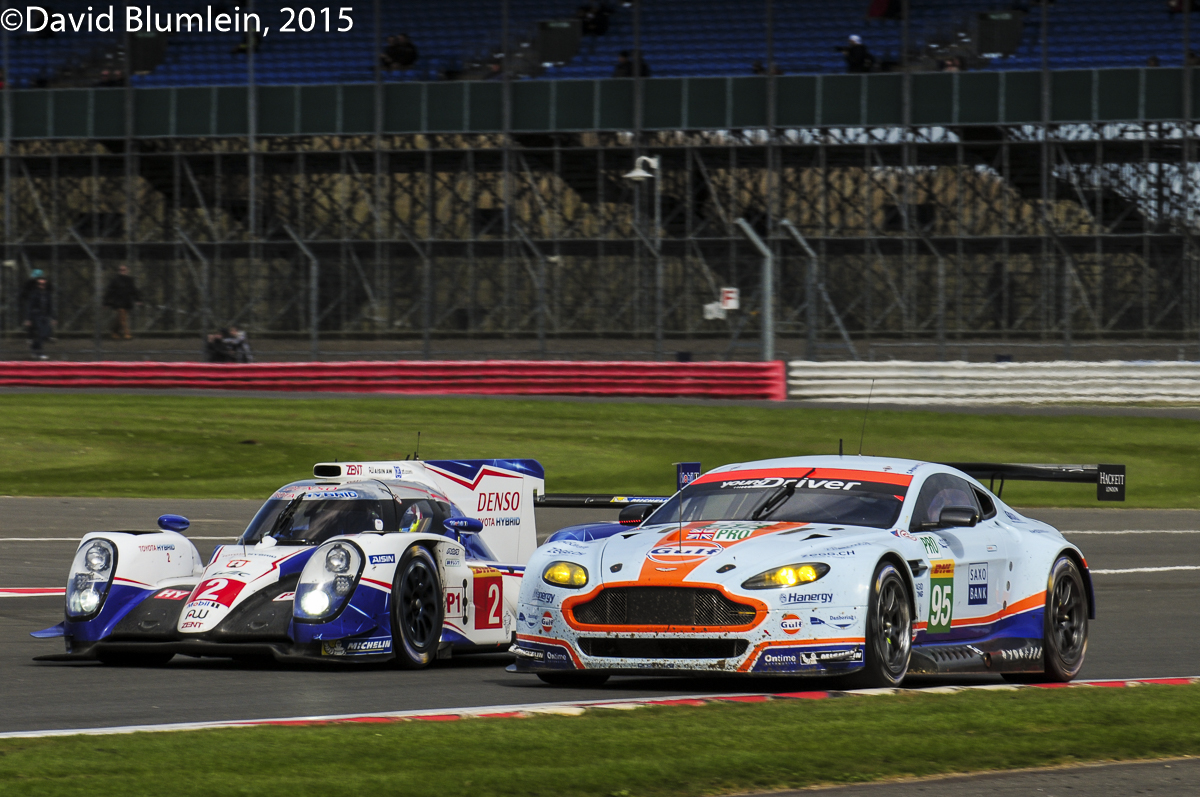
Here the Toyota which finished 4th swallows up the GT Aston Martin which came 4th in the GTE Pro class on the entrance to Chapel Curve.
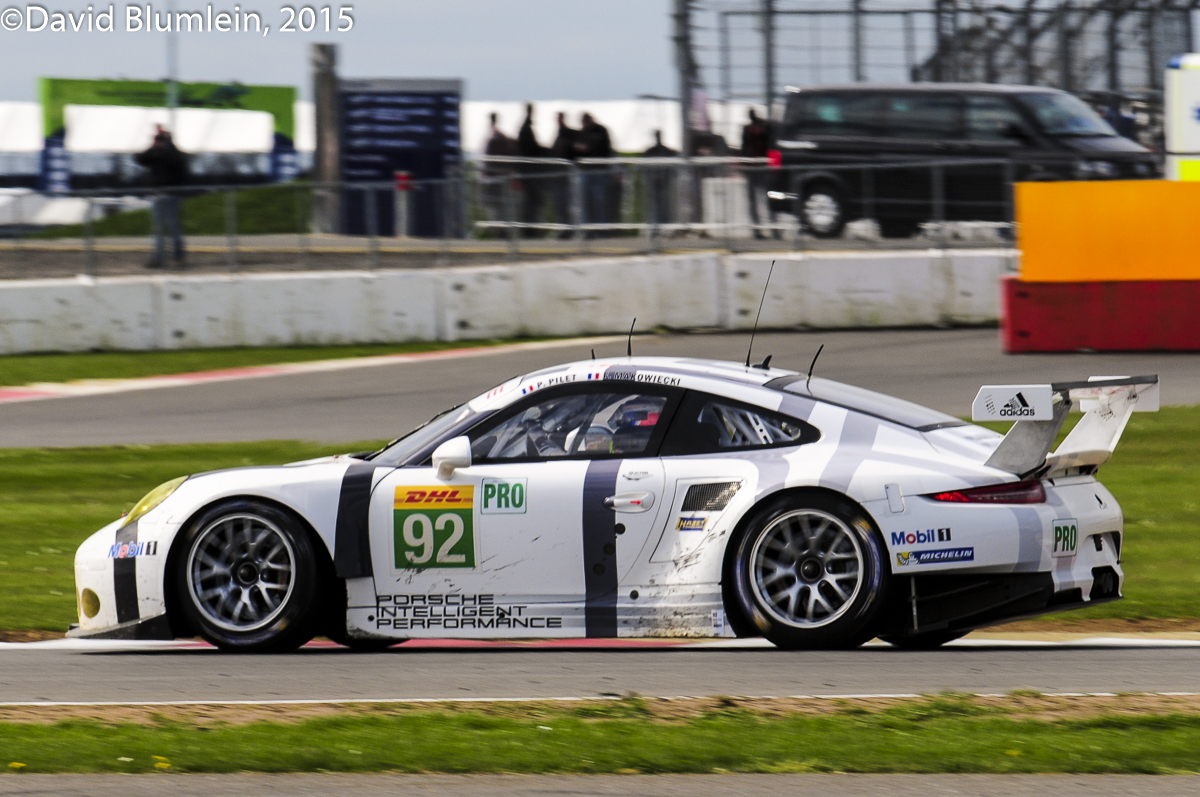
Always a threat are the Porsche Team Manthey 911 RSRs. This one is coming out of the fast curves at Becketts on its way to a disappointing 7th in class.
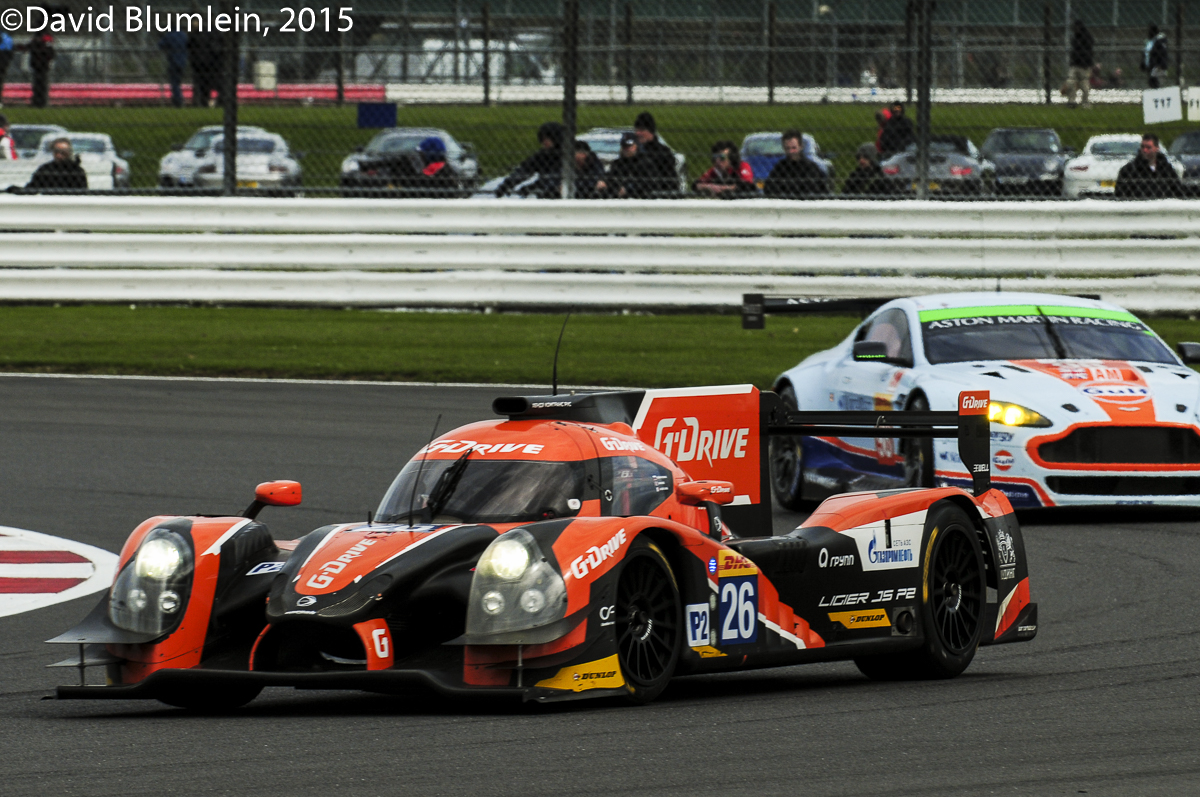
The LM P2 Ligiers, introduced only last year at Le Mans, have become very potent contenders – this one was the well merited class winner which finished 6th overall.
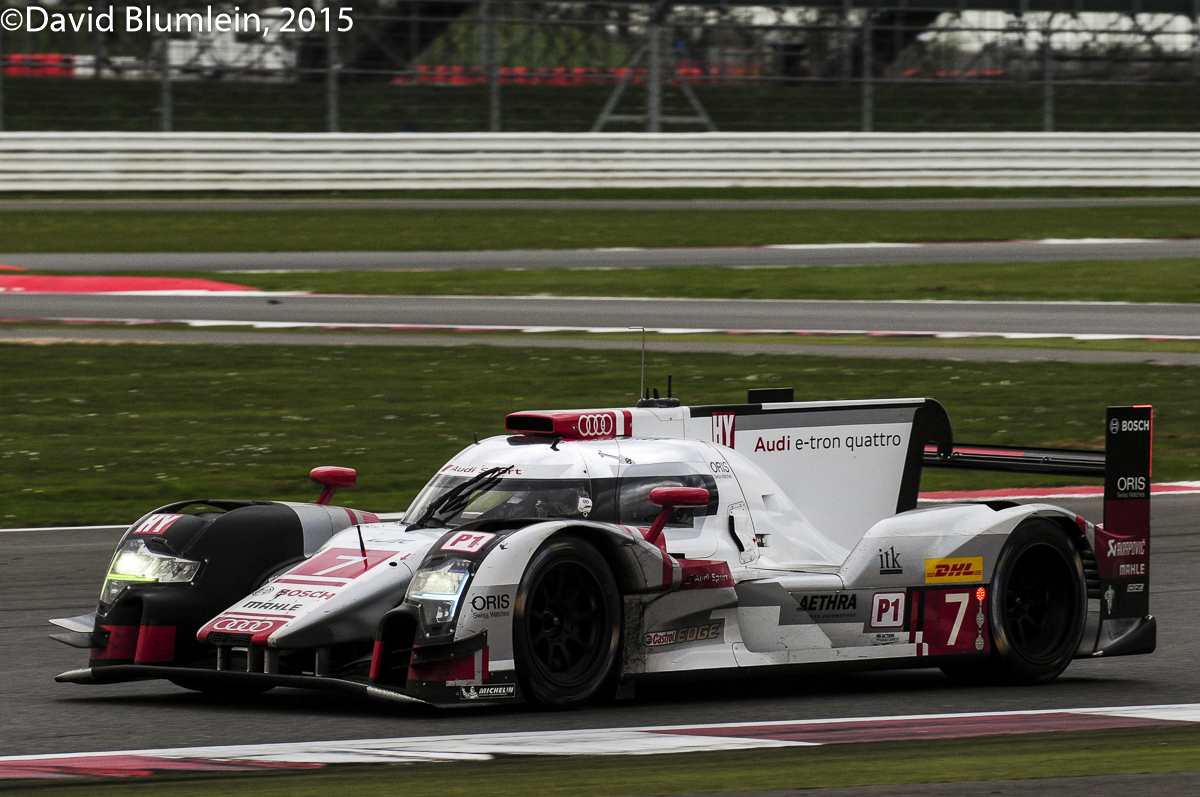
Here is the winning Audi R18 e-tron Quattro fighting to protect its slender lead after a late “stop-go” penalty for exceeding the track limits coming out of Club – it just held off the Porsche no.18 of the hard-charging Jani!
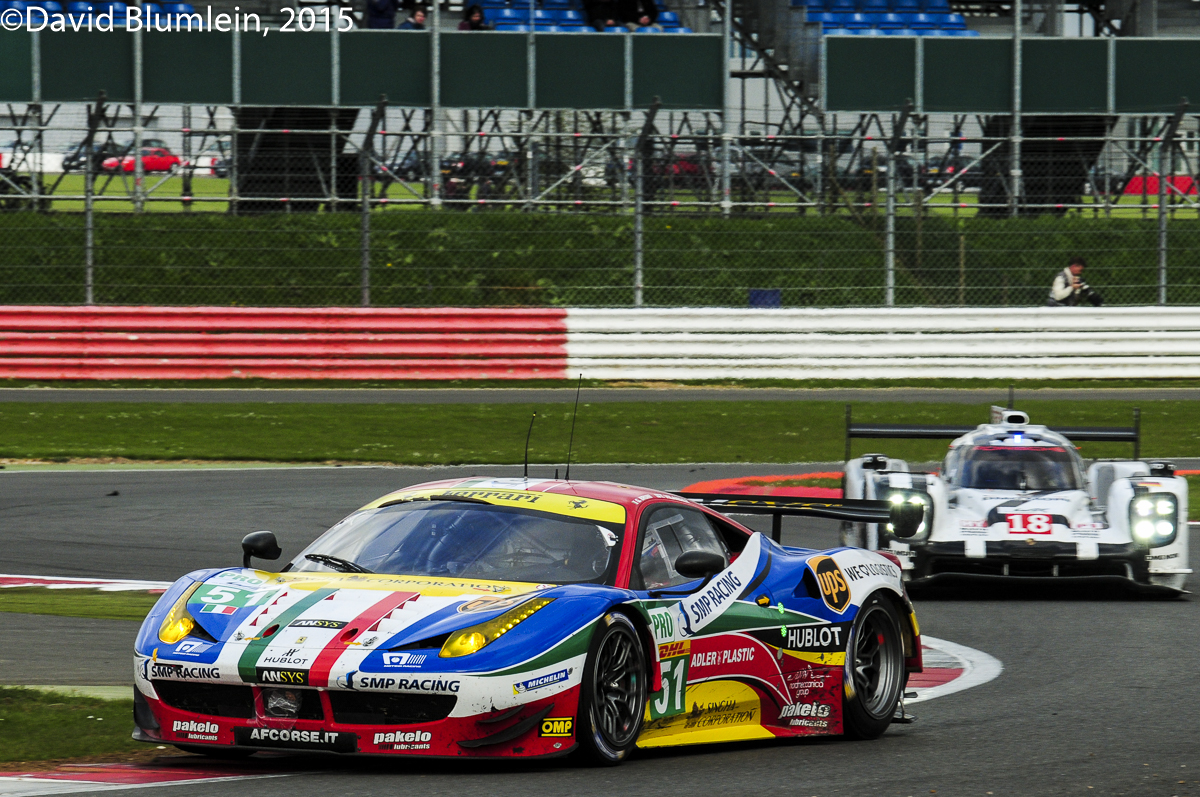
One loses count of the number of times the excellent pairing of Bruni and Vilander have already won GT honours for the AF Corse team. Here they are doing it again in the Ferrari F458 Italia; the desperate Jani pursues the Italian GTE Pro car into Club Corner.
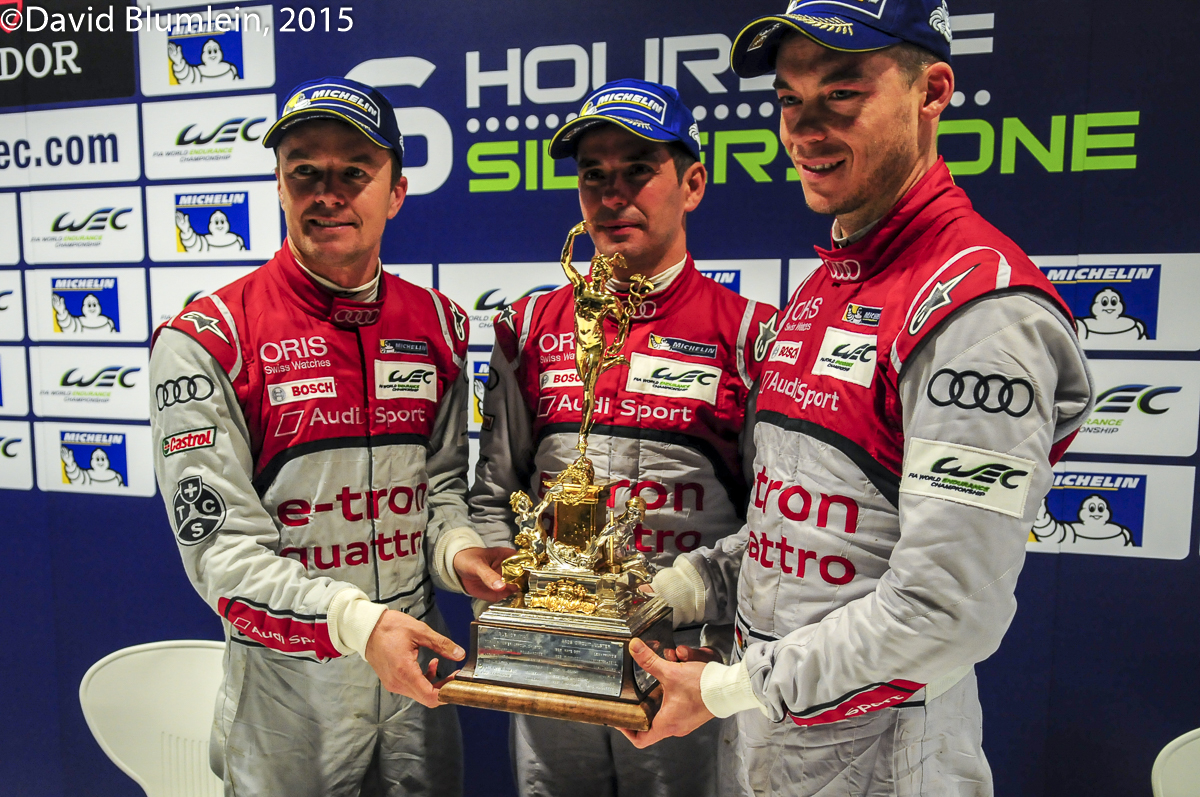
The victors of the Silverstone 6 Hours, Fässler, Tréluyer and Lotterer can add their names to the prestigious Tourist Trophy.
David Blumlein July 2015
Folks
it has been very quiet here at DDC Towers, actually though the site has been in a state of hibernation, I have been flat out, June and Le Mans do that every year.
However the general feeling of being in the right place at the right time when at La Sarthe was absent this year, despite the race being an absolute classic.
Missing in action, though not in spirit, was our own Captain Black aka David Stephens. David had suffered a stroke and passed away the weekend before the race, shocking news.
David was an integral part of the endurance motorsport scene both as a photographer and a character and it seemed very strange not to see him rushing around at Le Mans, a place and a race that had become part of his fabric.
David, along with the Special Correspondent, had been a travelling companion and a friend of mine for the best part of 20 years. Now he is gone………..but our loss is nothing compared with that of his Mother and his sister, Deborah.
A measure of the respect and affection that David was held in could be seen in the packed church of St. Mary’s for his funeral service last week.
As if that was not enough bad news for the month of June, word filtered through yesterday that veteran journalist/broadcaster, Gustav Büsing, had also passed away, another man who loved Le Mans and the race that we all follow. He will be missed by all those who knew him.
John Brooks, July 2015